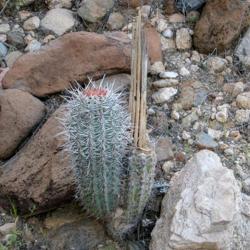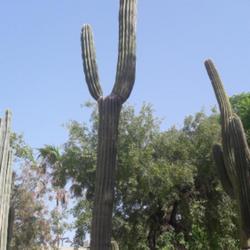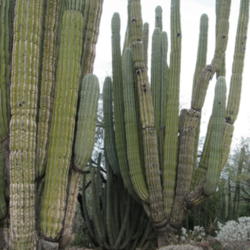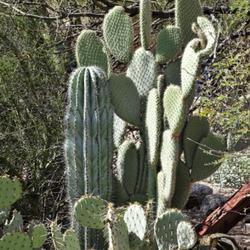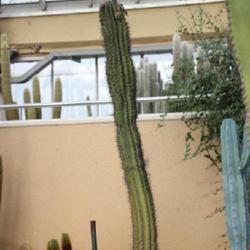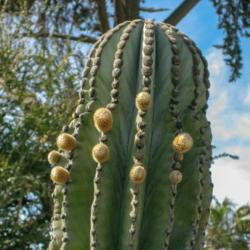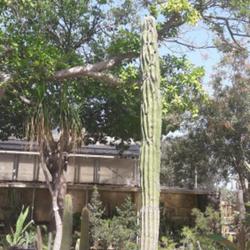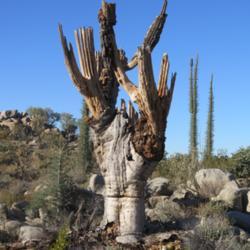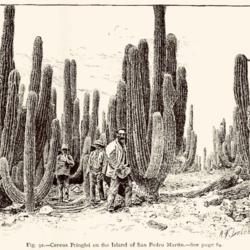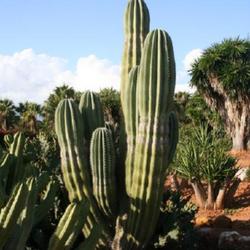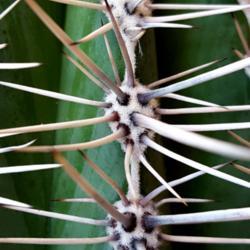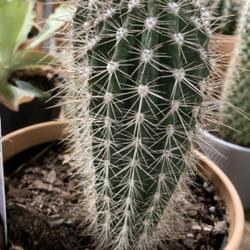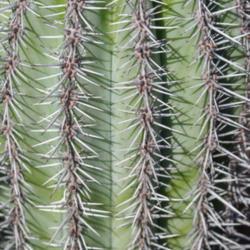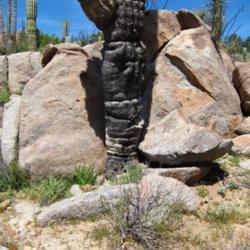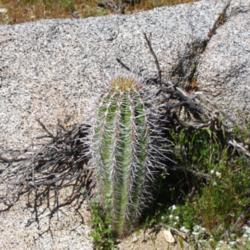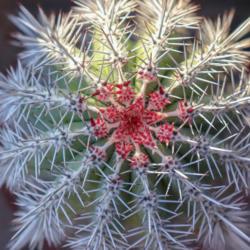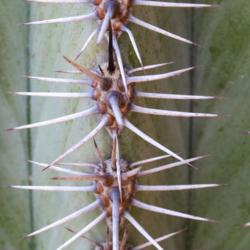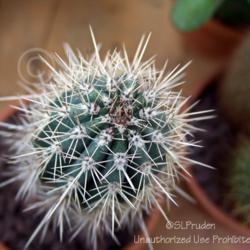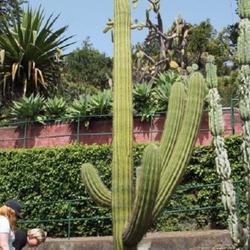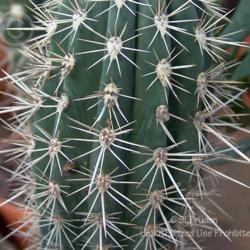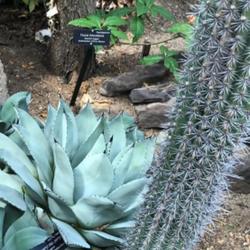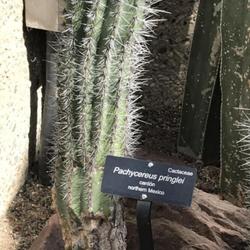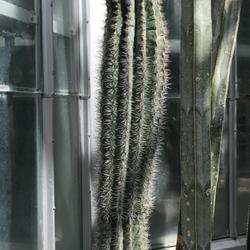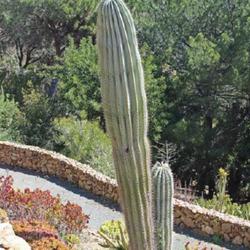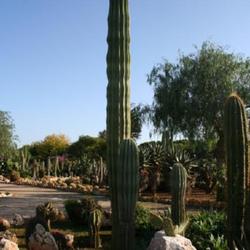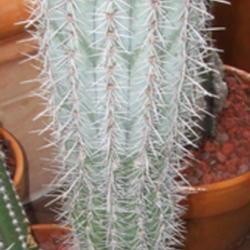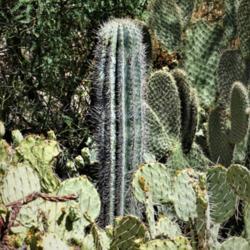Posted by
Baja_Costero (Baja California - Zone 11b) on Apr 9, 2018 2:28 PM concerning plant:
Among the largest of all cacti, the giant cardón is one of the signature plants of Baja California. It is restricted to BC's slice of the Sonoran Desert, from San Matías and San Felipe south to the tip of the peninsula. In desert regions it is quite common, often growing alongside cirios (Fouquieria columnaris) and other cacti.
In nature the cardón is a slow-growing tree to 60 feet tall with branches. It dominates dry, rocky areas and can colonize pure rock by growing in decomposing granite or cracks in the rock. A hard core desert survivor like few others, it tolerates extended drought by drawing on water reserves in its succulent stems. The stems of these plants provide valuable protection and nesting locations to birds, which also eat the fruit.
In cultivation this plant requires strong light and excellent drainage. It can be a well behaved container plant for several years (at least a decade) before it begs to be put in the ground. Allow the soil to dry out at depth before watering and do not overwater in summer.
The cardón may be easily confused with the saguaro (Carnegiea gigantea), also a Sonoran Desert native, in cultivation. However, there are no saguaros in BC. The two plants can be resolved based on their flowers, their size (cardón more massive and highly branched), and the height of the first branches (cardón generally lower), among other more subtle features. It has been suggested based on DNA evidence that P. pringlei is an allopolyploid (2n=44) resulting from hybridization of P. pecten-aboriginum (2n=22) and Carnegiea (2n=22).
Young plants are extremely spiny but older plants (or at least their older stems) have less of a spiny look. Cardones are trioecious, meaning that separate individuals may make male flowers, female flowers, or bisexual flowers (or asexual flowers, in some cases).
The cardón is one parent of the rare natural hybrid xPacherocactus orcutti, along with the golden-spined Bergerocactus emoryi. The two only overlap in the region near El Rosario (Bergerocactus extends north from there, cardón extends south).


